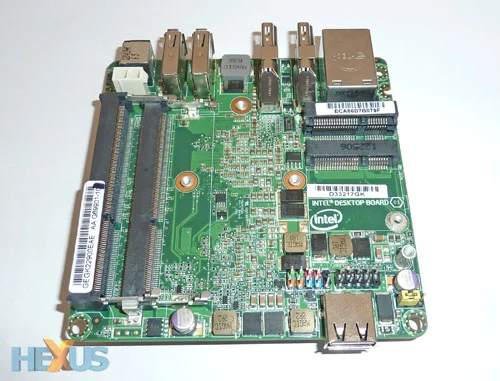It’s been a while since we last discussed Intel’s Next Unit of Computing (NUC) x86-powered machines.
As you may recall, Santa Clara showcased the tiny little computer boards back in May of this year.
Since then, the mini-PC market has boomed with hordes of ARM-powered Android and Linux bare-bones boards. So if you’re more of a mainstream PC-Windows user, you’ll be glad to hear that the Intel NUC machines will be landing in October.

Essentially, the NUC is a small form factor computer platform targeted at business applications and digital signage. However, I suspect the hardware will likely end up being used to power uber-mini HTPC machines as well.
The board – which supports mSATA storage – measures 10 cm x 10 cm and has two standard SO-DIMM sized memory slots for RAM. The NUC also boasts a mini-PCIe connector that users can slot in with whatever they want, including Wi-Fi or Bluetooth cards. The board uses both sides for hardware with a Core i3 processor platform controller hub on the back, while integrated HD 4000 Graphics supports HD video.
It’s likely that we will see these machines surface with a wide variety of Intel processors, including the Atom line. Depending on the processor inside, the little board may or may not require an active cooling fan. Computers using these boards are expected to be offered with HDMI and Ethernet connectivity, with another version tipped to support the relatively new Thunderbolt transfer protocol.
With this little NUC board having a rather odd 10 x 10 cm size; Intel is also going to be supplying the computer chassis. The machines will use a small 20 W power supply via an external adapter. As there is no internal power supply, the computer chassis will only be slightly larger than the board itself.
The biggest downside? The little machine will likely carry a $400 price tag – making it significantly more expensive than device like the Raspberry Pi and potentially limiting its adoption in the bare-bones market.






